If lower back pain keeps you up at night, there are sleep hacks that can help. Here’s how to find the best sleeping position for you.
Is back pain disrupting your sleep? You’re not alone. Researchers estimate that 80 percent of adults suffer from back pain at least once in their life, and this pain plays a big role in interrupting sleep. (1, 2) That’s a lot of sore backs and sleepless nights.
Luckily, finding the best sleeping position for you can provide significant relief from back pain, and may lead to longer, more restful sleep. We put together some ideas so you can find the best sleeping position to curl into, reducing your chances of letting that back pain wake you up.
Do you wake up feeling fatigued, depressed, and restless? Break the cycle of bad sleep with our FREE Sleep Guide.
Click here to get your FREE copy of our Sleep Guide!
Why It’s Hard to Sleep with Back Pain
Sleeping with back pain is difficult since the pain seems to get worse when you’re lying down.
There are many possible causes of back pain. Most of the time it stems from strains, which overstretch your back muscles. It can also be caused by nerve irritation and herniated discs, which can cause a portion of the disc to push out and potentially compress nerves.
Lying down can add pressure to an area that is already compressed or out of alignment, making back pain worse. When you’re standing, there’s usually less pressure on your spine or lower back.
Good posture can often help ease back pain, but you’ll probably fall out of that posture when you’re sleeping. (3)
The Best Sleeping Positions and Why They Work
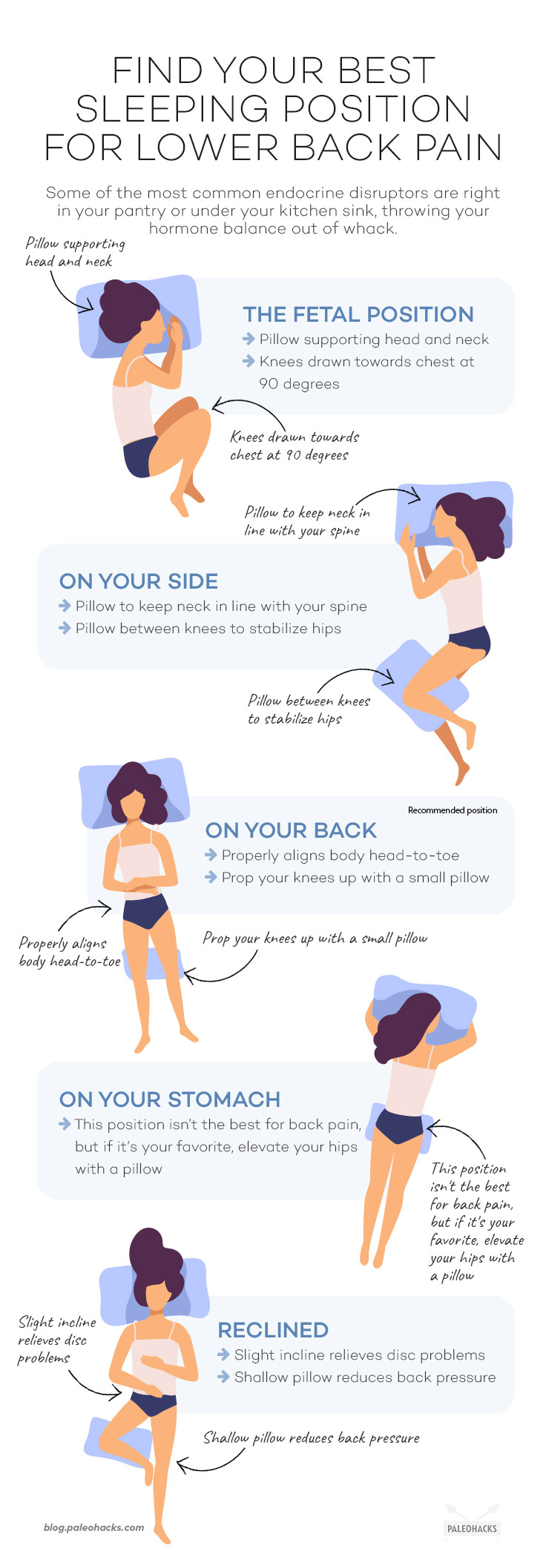
So, what is the ideal sleeping position?
You’ll have to try each one to see which works best for you, but the best positions have one thing in common: they prioritize proper alignment. This helps you avoid putting more pressure on compressed discs or nerves, and makes space in your joints and discs for nutrients and water to flow through.
Researchers say this space hydrates your ligaments, cartilage, and tendons through correct alignment and can ease back pain further while sleeping. (4)
Here are the top positions for sleeping with back pain. You’ll feel most comfortable choosing the one closest to how you normally sleep. For instance, if you normally sleep on your back, try making the adjustment for the back-sleeping position.
1. The Fetal Position
If your back pain is the result of a compressed or herniated spinal disc, sleeping in the fetal position will give you some relief. This is because curling your spine can help take the pressure off the discs in the lower back, opening them up and reducing pain.
The key here is to position your pillow so it supports your head and neck, then draw your knees up toward your chest almost to a 90-degree angle to your spine.
2. On Your Side with a Pillow Between Your Knees
Side-sleeping is usually not the best position for back pain. When your legs drape unevenly to one side, or your hips fall forward, it can slide your spine out of alignment.
However, if you put a semi-firm pillow between your knees, it will stabilize your hips, preventing them from twisting or falling forward or backward.
Be sure to also place a pillow under your head that keeps your neck in line with your spine.
3. On Your Back with a Pillow Under Your Knees
Sleeping on your back is the most widely recommended position to relieve back pain. This position aligns your body from head to toe, and is the most similar to standing with proper posture.
To make this position even better, prop your knees up with a small pillow. This is the only area that sinks a bit when you sleep on your back, and propping them just slightly will have your spine in full alignment.
4. On Your Stomach with a Pillow Under Your Hips
Sleeping on your stomach is usually not recommended when you have back pain, since it causes the lower region of your spine to sink downward with your hips instead of following its normal curve. This position can also compress your low back and strain your neck.
However, if you do find yourself always ending up on your stomach, try putting a pillow beneath your hips to elevate them. This will put your spine into better alignment.
5. Reclined on Your Back
If you find yourself sleeping better in a recliner than on a flat mattress, try investing in an adjustable bed. Some people with spinal conditions that cause disc problems may find relief with a slight recline.
You may also want to place a shallow pillow under your knees in this position to remove pressure off your lower back.
More Sleep Hacks for Back Pain
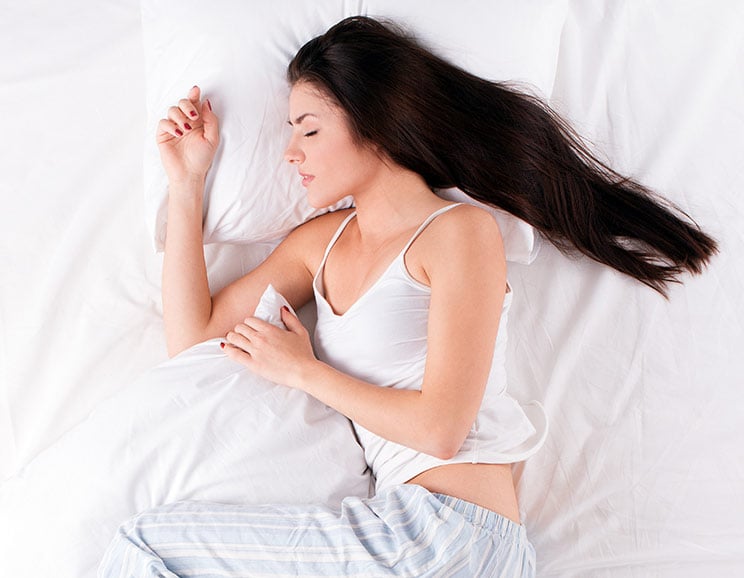
Of course, sleeping positions don’t tell the whole story when it comes to quality sleep. Here are some other ideas to try alongside them:
Find the Right Pillow
The right pillow is crucial in keeping your spine in complete alignment through the night. Here are some key points to consider when shopping for a pillow:
- Make sure the pillow is thick enough that your neck is aligned with the rest of your spine, both when you’re on your side or on your back.
- Be sure the space beneath your neck is completely filled to support its curve.
- Double check that the pillow is firm enough to support this alignment throughout your sleep.
Memory foam checks all of these boxes, since it’s firm yet conforms to your head and neck, letting it settle into its natural spinal alignment.
Also, consider how you usually sleep when choosing a pillow. If you sleep on your stomach a lot, go for a thinner pillow, since your head doesn’t need to be propped up as much to be aligned with your spine.
If you sleep on your side, consider buying a firmer pillow to support the wider space between your shoulder and neck. Throw an extra pillow between your knees.
Change Positions Carefully
It can be easy to turn into an uncomfortable position when rolling over or shifting positions in the night if you’re not careful. Try to develop a habit of tightening your core before moving, as this can reduce the load on your joints and ligaments when you twist.
Also, try to move your body in one fluid motion, instead of allowing your spine or hips to twist or rotate. This can help you avoid moving any joints in opposite directions, which could cause compensation and pain.
Consider Your Mattress
Is your mattress several years old, lacking firmness, or extra-springy? It might be time to buy a new one along with your pillows.
Ideally, your mattress should be semi-firm and, like a good pillow, conform to the curves of your body. Memory foam is great for this, but if you can’t afford a full memory foam mattress, try looking into memory foam toppers instead.
We know too-soft mattresses aren’t good for your back, but don’t go too firm, either! Studies show both too soft and too firm mattresses can cause misalignment of your spine. (5) If we’re measuring mattress firmness on a 1 to 10 scale, you’d want something in the 4 to 7 range.
Avoid Electronics Before Bed
Studies show the blue light emitted from electronics, including laptops, e-readers, and cell phones, can disturb your circadian rhythm.
Your circadian rhythm regulates your sleep and wake cycles, so if it gets disturbed, you may have trouble falling asleep or waking up. (6)
Try to avoid using electronics at night, or at least an hour before bed.
Avoid Caffeine Past the Early Afternoon
Drinking coffee, caffeinated tea, of other caffeinated drinks before bed can disrupt your sleep as well, since they stimulate your nervous system. Try to have your last cup of coffee by noon to be sure it doesn’t keep you awake.
The Bottom Line
Back pain and sleep don’t mix, but with the right sleeping position and bedding, you should be able to find the relief you need. Combine these back pain sleep hacks with good sleep hygiene, and you’ll enjoy restful, deep, and pain-free sleep.
Prepare to get the best sleep of your life with Primal Sleep, a cutting-edge audio program that helps you find deep, blissful sleep every single night. Get restful, peaceful slumber night after night with Primal Sleep today.
Read This Next: 7 Hip and Back Stretches to Help You Sleep Faster Than Ambien



 Cucumber Bites with Smoky Shrimp and Avocado
Cucumber Bites with Smoky Shrimp and Avocado
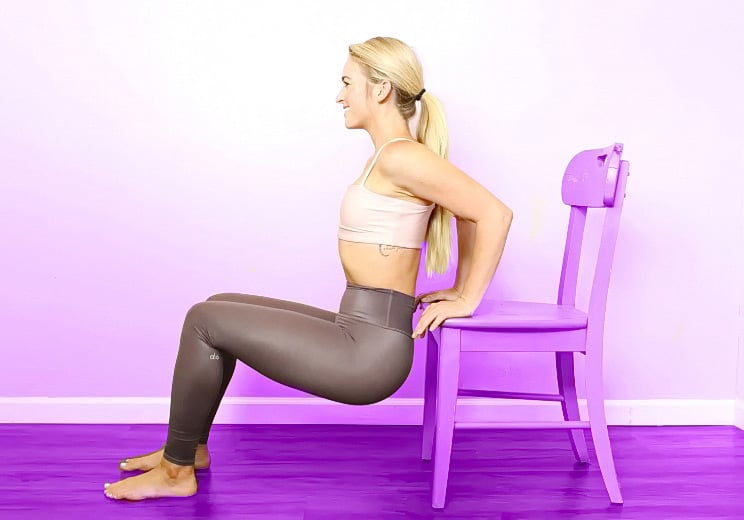


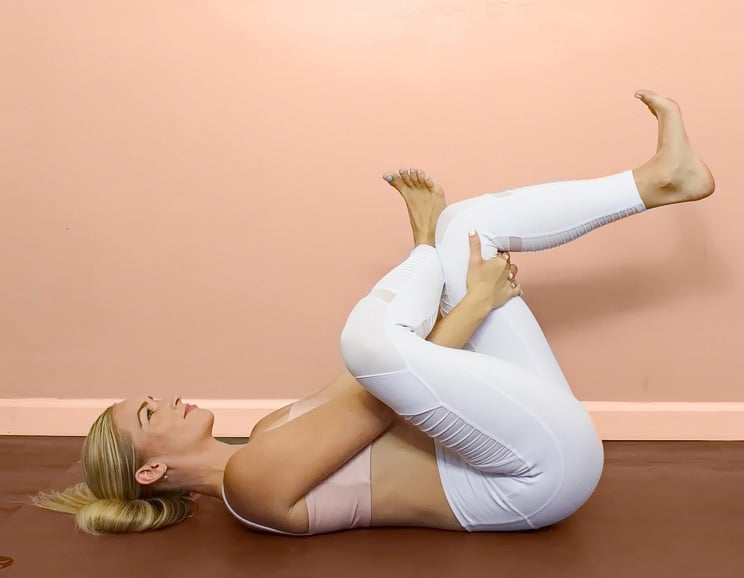
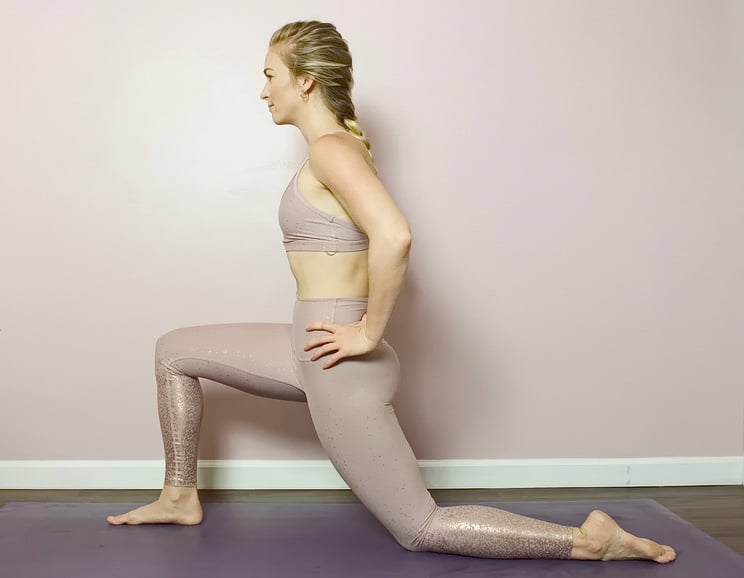

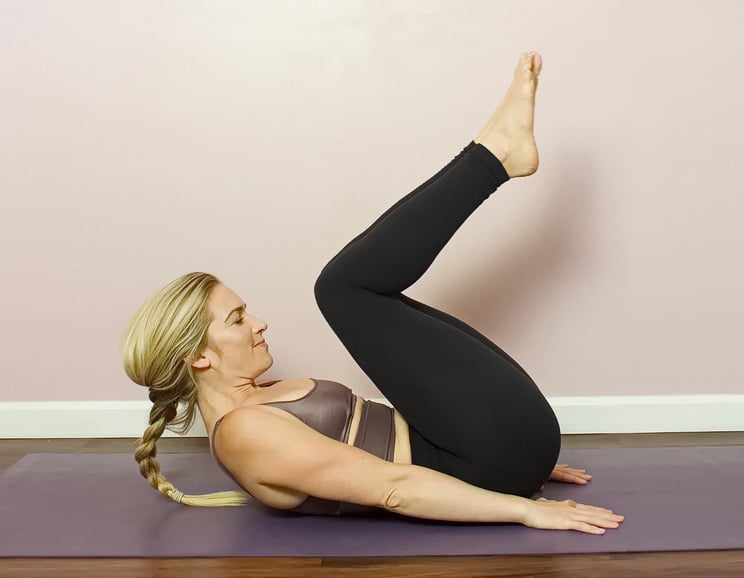
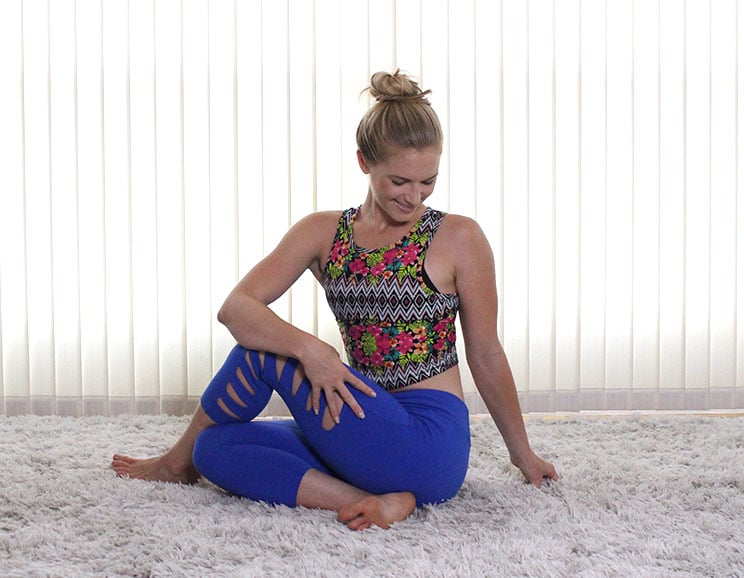
Show Comments